Fed officials have opted not to raise rates in June as they assess the impact of previous rate hikes and consider what to do next. On the other hand, the number of unemployment insurance claims has decreased nationwide.
Home-based data reveal a summer boom for small businesses, with job activity expanding, wages rising and employees recording more stable working hours.
In an economy where forecasts and expectations change on a daily basis, real-time data on activity across North American businesses shows that warmer weather is making it easier for shoppers and diners to go out. By analyzing the behavioral data of his more than two million employees who work for more than 100,000 small businesses, Homebase found out how the broader economic environment was for small businesses and their workers early in the second quarter. I’m trying to understand what the impact is.
Summary of Findings: We are seeing a seasonal boom in outdoor activities in earnest as more Main Street jobs result in longer days and longer working hours for small business employees.
- Hiring activity is booming on Main Street, but lags behind historical trends. Employees are working longer shifts to meet demand.
- Employment growth varies by industry. Entertainment saw a strong increase (22.3%) from May to June, similar to the previous year. Hospitality surged (8.8%), lagging behind the big surge in the previous year.
- Summer weather is having a real impact on small businesses. Warmer days in cities in the north have boosted employment significantly, while June’s heat wave has hampered job numbers in the south.
- Wages for hourly workers are on the rise again, The service industry has been the driving force after the slump in May.
Longer summer days mean longer shifts for small businesses
Small business activity has increased significantly, but has not reached the same level as in previous years. Owners rely on existing employees to work more to meet demand.
working employees
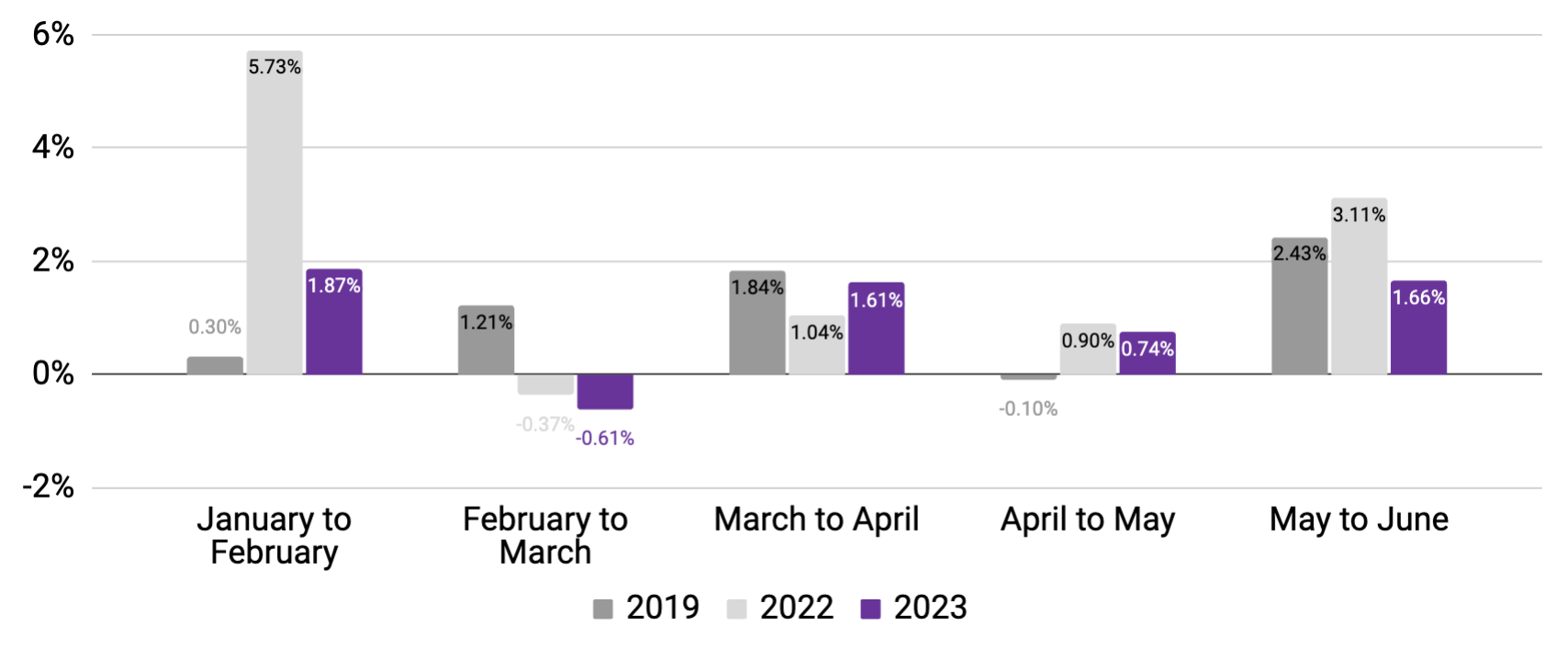
(7-day average monthly change compared to January of reporting year)
working time
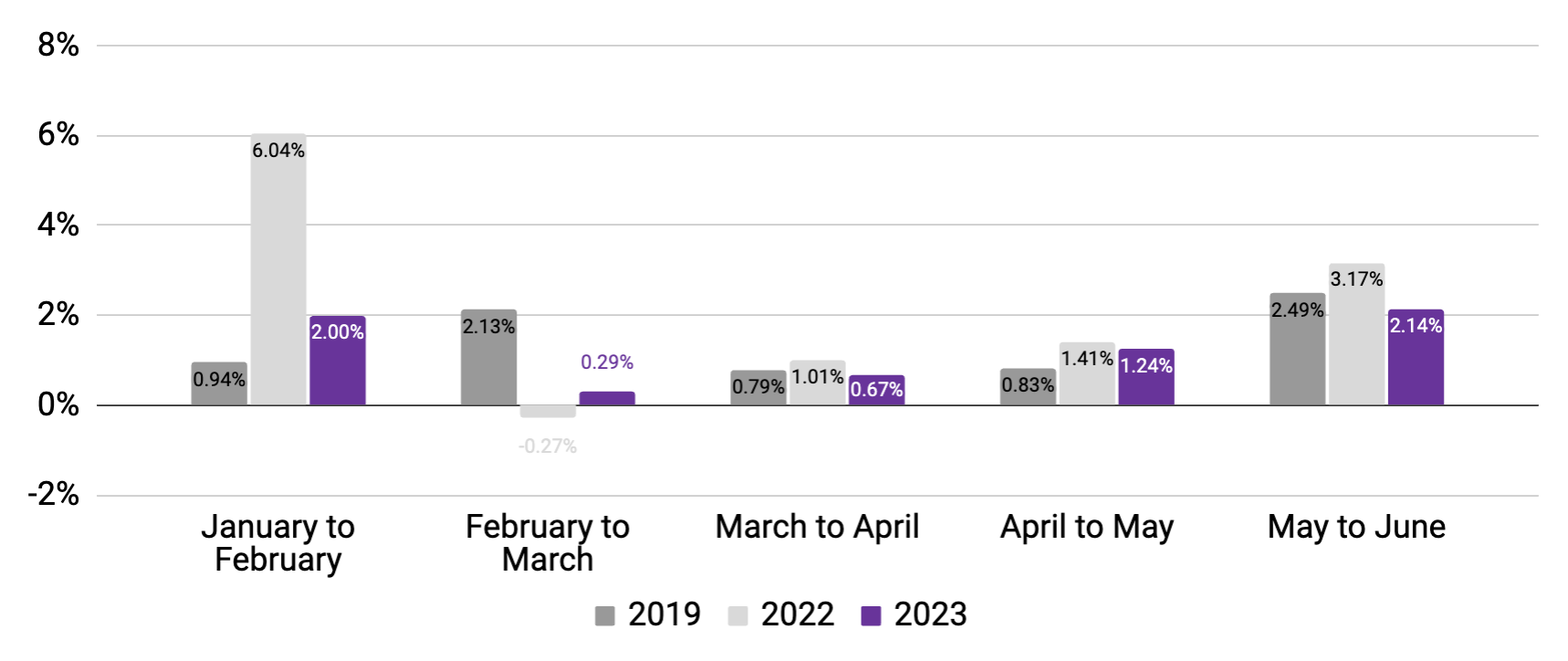
(7-day average monthly change compared to January of reporting year)
Data typically compare rolling averages over the 7-day week that includes the 12th of each month. Data for April 2023 includes subsequent weeks to account for Easter holidays. Source: Homebase data.
Entertainment is booming for small businesses
With school holidays coming up, families are turning to outdoor entertainment to fill the time. With school holidays coming up, families are turning to outdoor entertainment to fill the time.
entertainment¹ showed a large increase (22.3%) from May to June, similar to the previous year, but hospitality There was a significant increase (8.8%) compared to the large surge of the previous year.
Food and beverage and retail (0.9% and 1.9%, respectively) also increased, but showed more seasonal consistency, with Main Street shopping and dining the main force each month.
rate of change in employees working
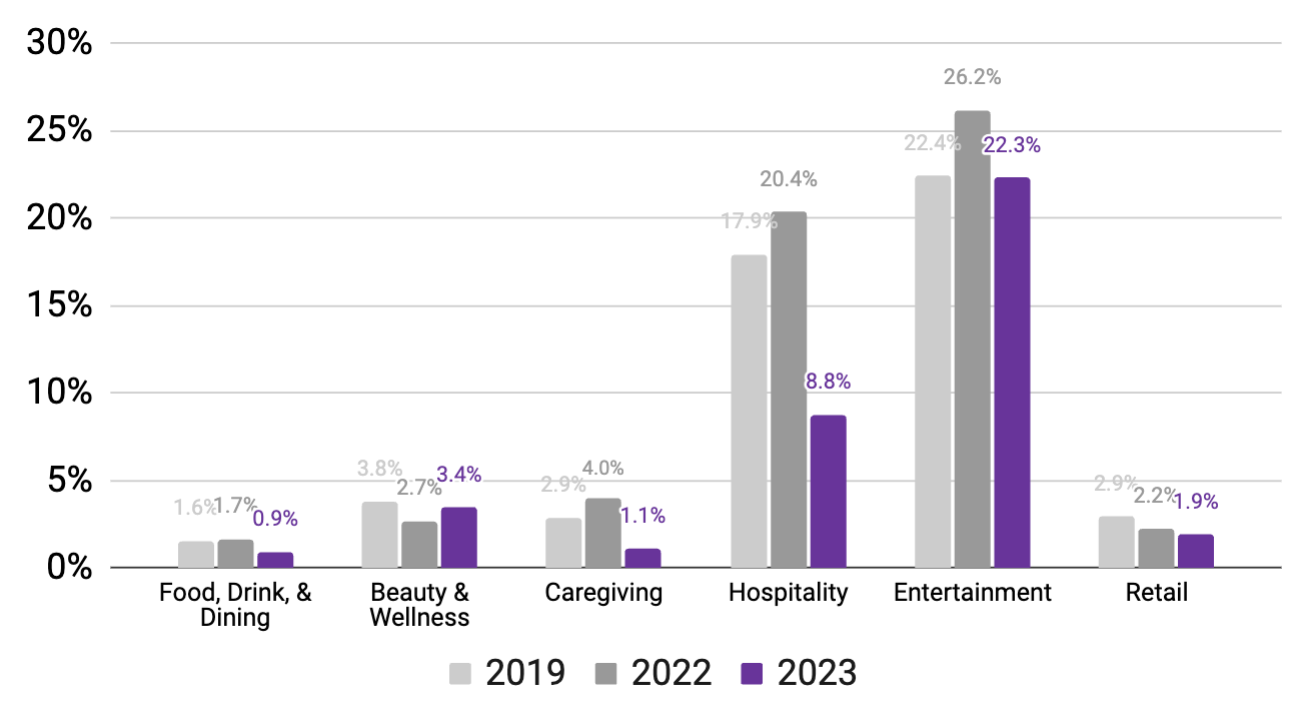
(Mid-June and Mid-May, using baselines of Jan-2019 and Jan-23)²
1. Entertainment includes events/festivals, sports/recreation, parks, cinemas, and other categories.
2. June 9-15 vs. May 12-18 (2019). June 12-18 vs May 8-14 (2022). June 11-17 vs May 7-13 (2023). Source: Homebase data.
Weather boosts small business activity in northern cities
Unseasonably warm temperatures south of both coasts dampened small business spending.

Note: June 11-17 and May 7-13.Source: Homebase data
Wage hikes in service industries boost earnings for hourly workers after a sluggish month
wage inflation
Change in average hourly wage from the previous month
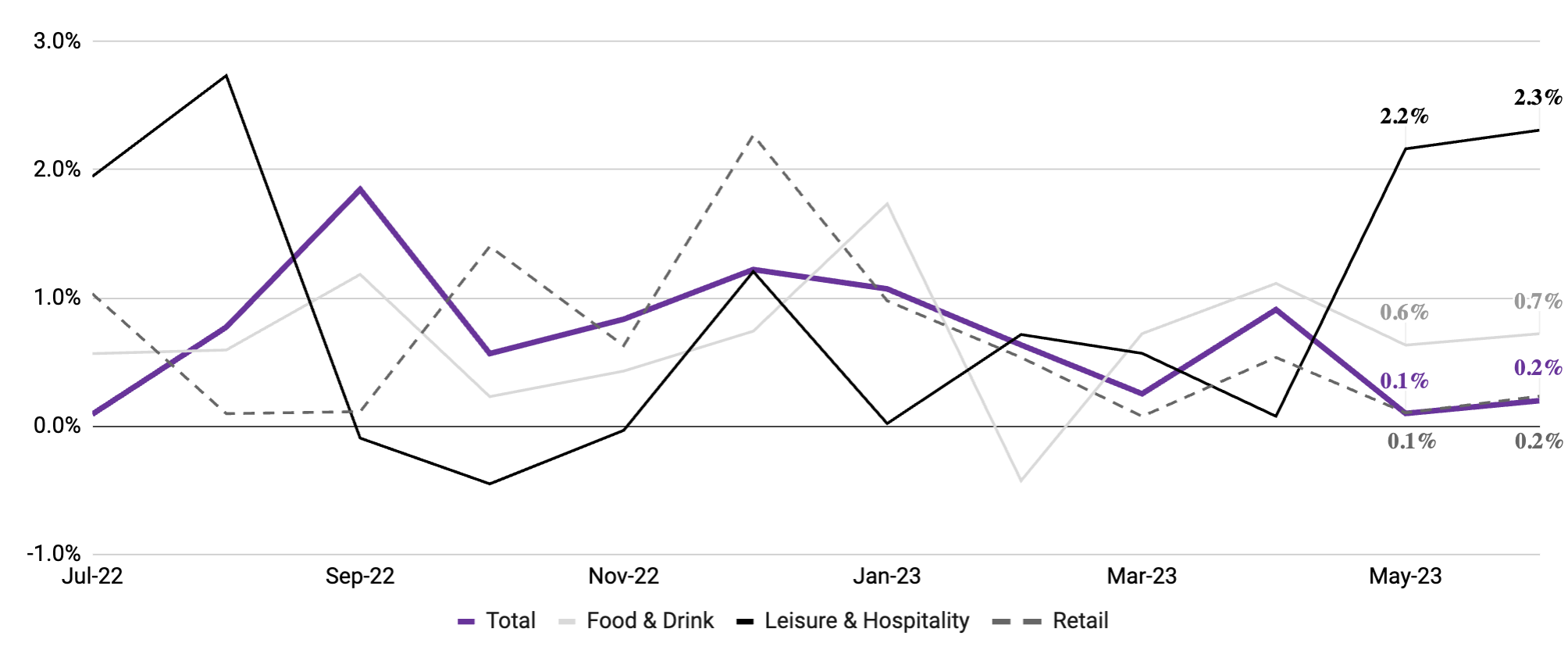
Note: Data measures average hourly wages for locations that used Homebase to pay employees in both June 2022 and June 2023. Source: Homebase salary data.
hourly employee pulse check
A pulse check in June among more than 600 hourly workers showed a decline in optimism about job prospects.
Long working hours and lower expectations of workers
While the majority of employees surveyed believe their job prospects will remain the same or improve in the next year (36% and 36%, respectively), 28% are currently uncertain or uncertain. Expect it to get worse (up from 23% in April). The increase in respondents reporting pessimism (8%) and uncertainty (20%) indicates that more hourly employees are questioning whether the future prospects are really green.
Small business employees are generally working more this summer than they have in previous months. While more secure shifts will ease concerns about having enough working hours, they will also dampen optimism about what jobs will be available next year.
Survey question: Do you think your job options will be better, about the same, or worse in 12 months than they are today?
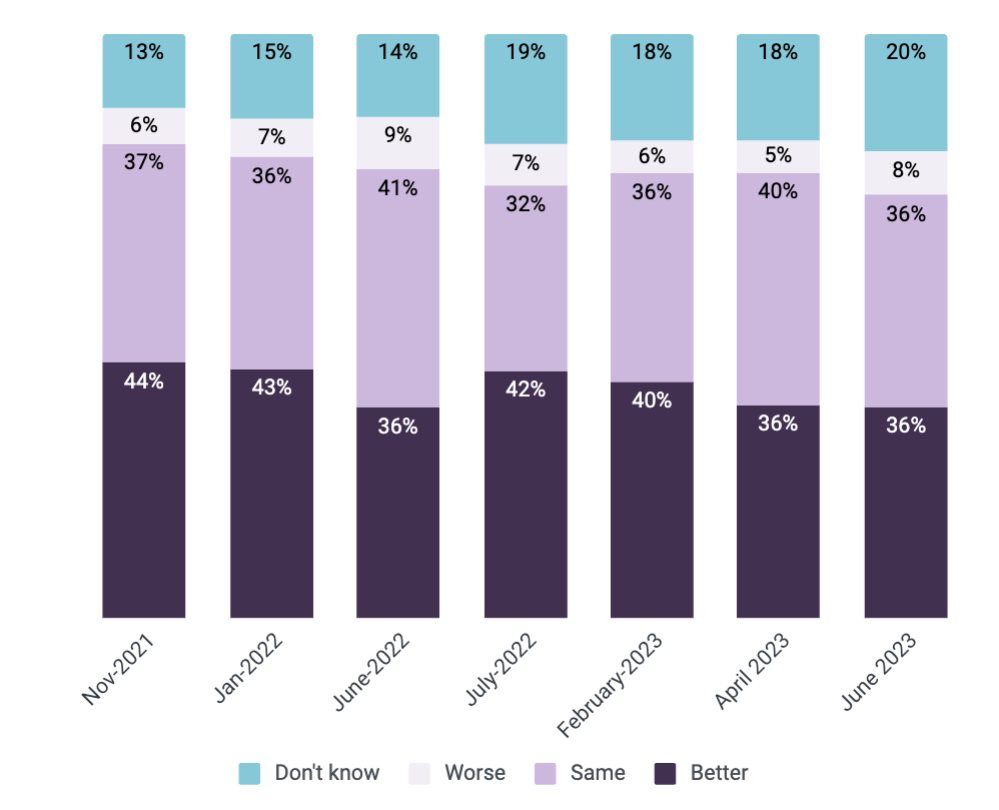
Increased working hours are good news, but not for everyone
Employees continue to report they are generally satisfied with their jobs (79% in June). However, compared to the April survey, 7% of respondents were dissatisfied with him, compared to 4% of them in the April survey, suggesting that some groups remain dissatisfied. I understand. 1 in 5 of her employees (21%) are planning to look for a job in the near future, while 4 in 5 of her employees said no or don’t know (79%). %).
Ensuring consistent working hours is a key consideration for employee satisfaction, but hourly workers still care about other factors. Team relationships, flexibility, wages and working conditions are just some of the ways owners win over Main Street employees.

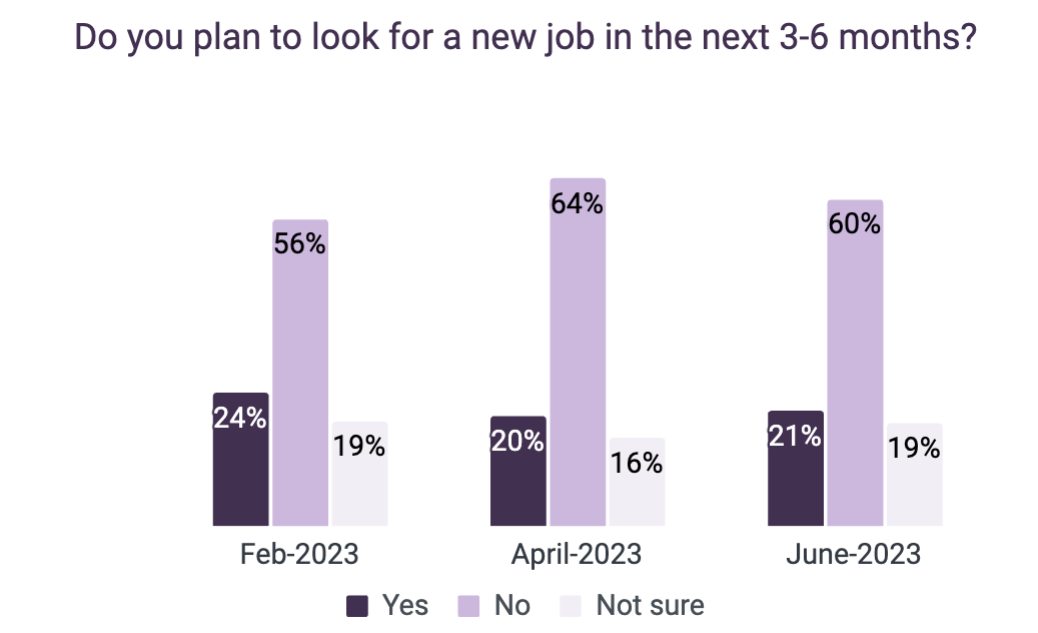
sauce: Pulse Survey of Home Base Employees. N = 873 (February 23); N = 666 (April 23); N = 611 (23.6)
Employees still worried about inflation but less concerned about working hours
Inflation (56%), burnout (50%) and non-work stress (46%) remain the top concerns for employees. Notably, concerns about reduced working hours decreased significantly in June compared to April (down from 40% to 33%), with hourly workers more satisfied with more hours on schedule. It became clear that
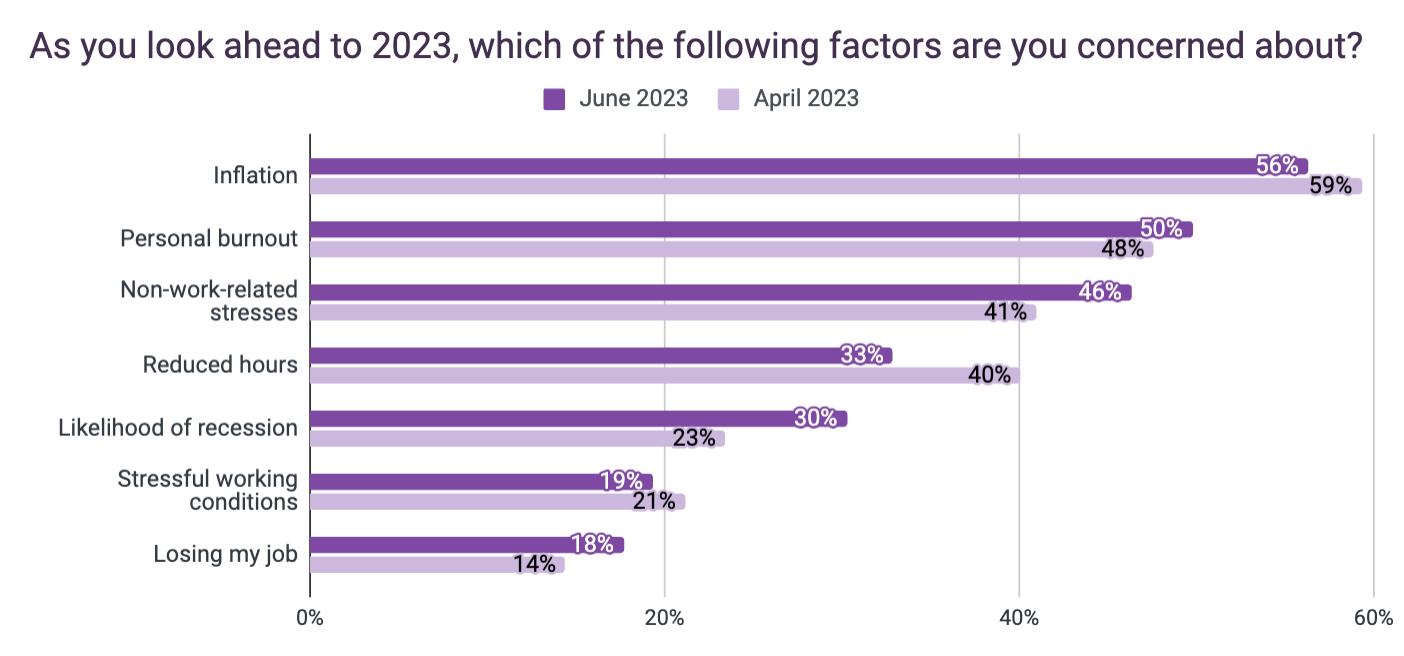
sauce: Pulse Survey of Home Base Employees. N = 666 (April 23); N = 611 (23.6)
Wages are deferred relative to other free benefits to workers
Money isn’t everything. Wages remain a key factor in determining where workers work (46% cited them as their top three criteria), but schedule management (57%) and co-worker relationships were cited in June. Non-wage benefits such as (54%) declined. 1st and 2nd place.
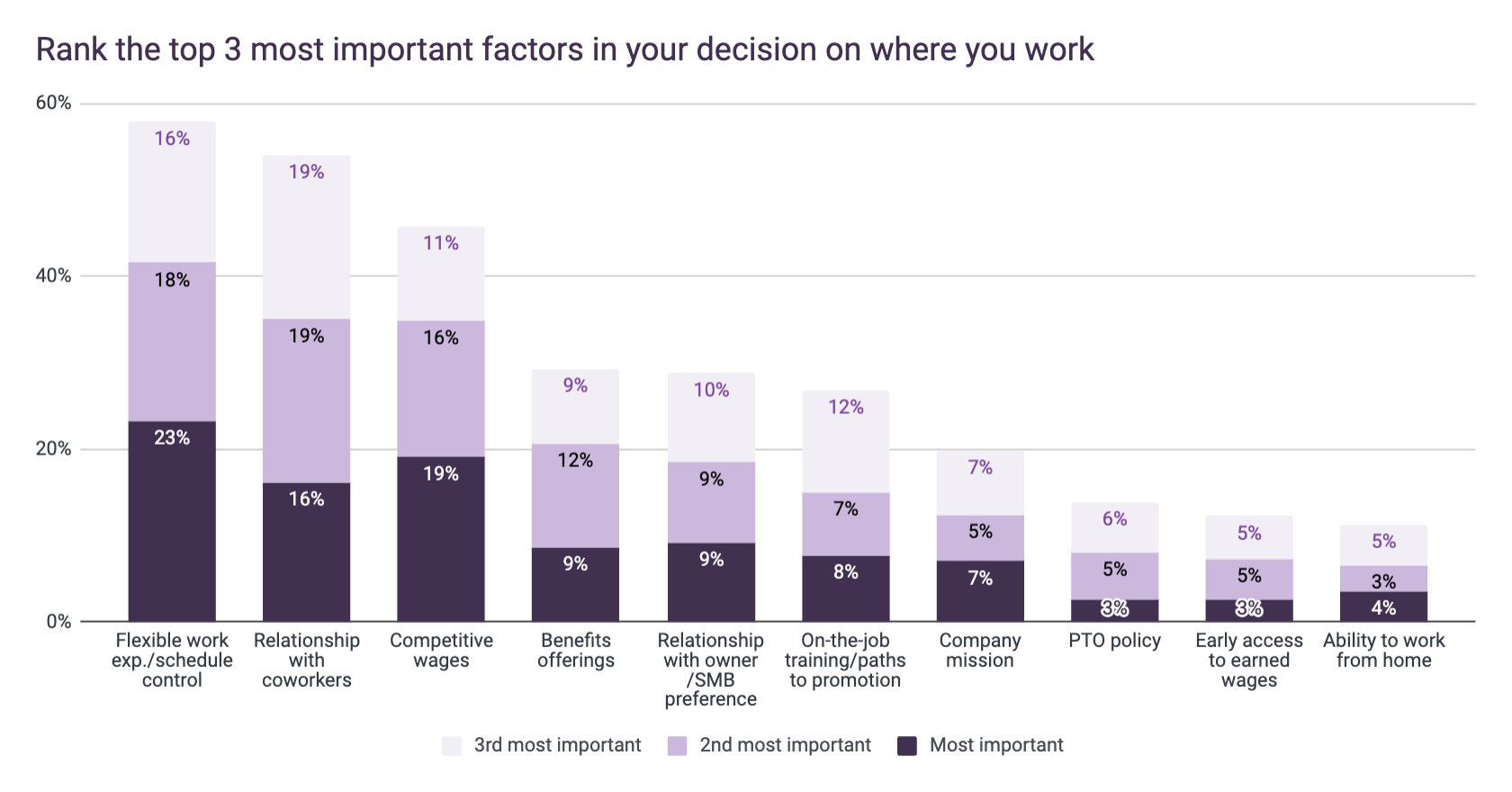
sauce: Pulse Survey of Home Base Employees. N = 666 (April 23); N = 611 (23.6)
Links to the following PDFs: Homebase Main Street Health Report for June 2023 Please cite Homebase when using this data for research or reporting purposes.

